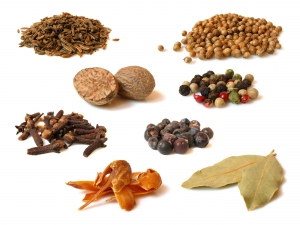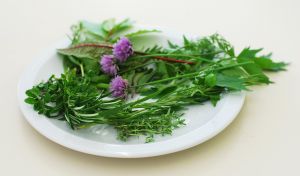This table shows the anti-oxidant potency, ORAC (Oxygen radical absorbant-capacity) value of the listed foods.
An intake of at least 8,500 ORAC is recommended, and yet most of us only get around 1,800 units per day.
>> People with high oxidation levels (athletes, runners..) may need 10,000 units or more to maintain a healthy immune system.
Diet is the preferred way to increase your levels, as opposed to supplements, but most people don't seem able to fit 7 -8 servings of these fruits and vegetables a day. That's why taking pharmaceutical-quality antioxidants is critical. I can guide you in selecting trusted brands, and the top hitters.
Organic foods with deeper, darker colors have higher anti-oxidant levels. Commercially raised, sprayed produce offers much less, and actually taxes your immune system.

 The Antioxidant Capacity of Fruits and Vegetables
The Antioxidant Capacity of Fruits and Vegetables
| Blueberries | 1 cup | 3240 |
| Cinnamon, ground | ¼ tsp | 2675 |
| Pomegranate juice | 5 ozs | 2450 |
| Pomegranate juice | 5 ozs | 2450 |
| Blackberries | 1 cup | 2932 |
| Strawberries | 1 cup | 2288 |
| Figs | ½ c. | 2124 |
| Oregano leaf, dried | ¼ tsp. | 2001 |
| Prunes | 4 pitted | 1848 |
| Pomegranate | ½ pomegranate | 1654 |
| Turmeric | ¼ tsp | 1592 |
| Raspberries | 1 cup | 1510 |
| Brussels Sprouts | 6 | 1236 |
| Green Tea | 1 teabag, steeped 5 mins | 1200 |
| Raisins | ¼ cup | 1019 |
| Spinach, steamed | ½ cup, cooked | 1089 |
| Kale | ½ cup, cooked | 1150 |
| Oatbran | 1/2 cup | 992 |
| Orange | 1 | 982 |
| Plum, dark purple | 1 | 949 |
| Cabbage, purple | ½ cup | 924 |
| Cranberries | ½ cup | 831 |
| Broccoli Florets | ½ c. cooked | 817 |
| Parsley, dried | ¼ tsp. | 743 |
| Beets | ½ cup, cooked | 715 |
| Spinach, Raw | 1 cup | 678 |
| Basil leaf, dried | ¼ tsp | 675 |
| Cantaloupe | ½ melon | 670 |
| Beans, baked | ½ cup | 640 |
| Plum, red | 1 | 626 |
| Grapefruit, pink | ½ | 580 |
| Pepper, Red | 1 med. Pepper | 540 |
| Watermelon | 1/16th, 10” diameter | 501 |
| Kiwi | 1 | 458 |
| Cherries | 10 | 455 |
| Asparagus | 8 spears | 900 |
| Beans, Kidney | ½ cup, cooked | 400 |
| Eggplant, with skin | ½ cup, cooked | 386 |
| Onion | ½ cup chopped | 360 |
| Corn | ½ cup cooked | 330 |
| Yam or sweet potato | ½ cup cooked | 301 |
| Pumpkin | ½ cup mashed | 301 |
| Apple | 1 medium | 300 |
| Peas, frozen | ½ c. cooked | 291 |
| Ginger, ground | ¼ tsp. | 288 |
| Banana | 1 | 252 |
| Applesauce | ½ cup | 250 |
| Mango | 1/2 cup | 246 |
| Potatoes | ½ cup cooked | 244 |
| Cauliflower | ½ cup cooked | 234 |
| Tomato | 1 medium | 233 |
| Zucchini | ½ cup, cooked | 230 |
| Pear | 1 medium | 222 |
| Leaf Lettuce | 10 leaves | 200 |
| Tofu | ½ cup | 195 |
| Squash, yellow | ½ cup, cooked | 183 |
| Grapes, red | 10 | 177 |
| Apricots | 3 | 175 |
| Carrots, cooked | ½ cup | 160 |
| Tomato sauce | ¼ cup | 149 |
| Avocado, Florida | ½ | 149 |
| Peach | 1 medium | 137 |
| Green beans | ½ cup cooked | 125 |
| Melon, honeydew | 1/10th | 125 |
| Lettuce, iceberg | 5 large leaves | 116 |
| Carrots, raw | ½ cup | 115 |
| Grapes, white | 10 | 107 |
| Cabbage, white | ½ cup | 105 |
| Celery | ½ cup, diced | 60 |
| Cucumber | ½ cup, sliced | 28 |

